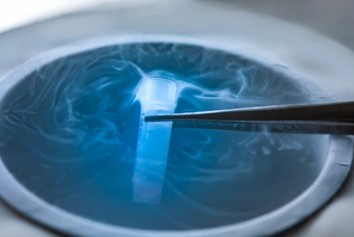Selection and Storage of Plant Cell Lines
Screening is the basic method of plant cell selection and improvement. The plant cells obtained by various methods are often inhomogeneous and will show different characteristics (such as early resistance, salt resistance, disease resistance, differences in growth rate, differences in chemical composition, etc.), and it is necessary to select the desired cell line with excellent characteristics. Plant cells will mutate during the cultivation process, and it is also necessary to screen plant cells to select favorable mutated cells and remove unfavorable mutated cells to obtain the cell lines required for the experiment.
Principle

Screening for plant cell lines with high content of secondary metabolites to greatly increase the content of useful secondary metabolites. This is one of the important ways to reduce costs and increase productivity in mass cell culture. High-yield cell lines can be screened according to the difference in cell phenotype (such as the activity of a certain enzyme, some secondary metabolites often show a certain color), or by measuring the content of secondary metabolites in single-cell clones. In this experiment, the visual method was used to screen high-producing cell lines. The screening indicators of the visual method are mainly color and shape, that is, the color directly displayed by the secondary metabolites and the morphological characteristics of the plant cell lines directly affected by the secondary metabolites.
Procedures
- Screening procedure for Lithospermum erythrorhizon Sieb. et Zucc. cell line with high pigment content by visual inspection
- The first step is to screen the callus cultured on solid, repeatedly select the deep purple callus, and obtain the high-yielding line A1.
- The high-yielding line A1 was cultured in liquid suspension, and single cells were collected after centrifugation.
- The single cells of A1 high-yielding line were transferred to solid medium for cloning. A second step of screening was performed to obtain high-producing cell lines.
- The results of visual methods can be verified by chemical analysis, such as colorimetry or HPLC.
- Cryopreservation procedure for Taxus cuspidata Sieb. et Zucc. high-producing cell line
- Selection of materials. Taxus chinensis callus in logarithmic growth state after culturing for 10-15 d was used as freezing material.
- Pre-culture. The culture materials were transferred to MS modified liquid medium containing 4%, 6% and 8% sucrose, respectively. They were cultured at various concentrations for 4 d, 6 d, 8 d, 10 d, 12 d, 14 d, and 16 d.
- Pretreatment of cryoprotectants. Design multiple combinations of cryoprotectants. a. Different contents of sugars, sugar alcohols or alcohols, including glycerol, glucose, sorbitol, mannose, PEG and 10% DMSO were combined as cryoprotectants. b. Composite protective agent of DMSO + sorbitol + PEG. Put about 100 mg of the pre-cultured material into a cryopreservation tube, add cryoprotectant to submerge the callus, seal the tube, and let it stand at 0°C for 30 min.
- Cooling and freezing procedure. The pretreated materials were processed by three methods: quick freezing, slow freezing and gradual freezing. a. Quick freezing: the method of putting plant materials directly into liquid nitrogen from 0°C or other pretreatment temperature for storage, and the cooling rate is 1000°C/min. b. Slow freezing: Slowly cool the pretreated material to -40°C at a cooling rate of about 1°C/min, place it for 180 min, and then put it into liquid nitrogen. c. Gradual freezing: Cool the pretreated material to -10°C, keep it for 30 min, then slowly lower it to -40°C, leave it for 180 min, and then put it into liquid nitrogen.
- Thaw and wash. After the materials were stored in liquid nitrogen, they were taken out and put into a 37°C water bath to thaw immediately. As soon as the ice in the preservation tube melted, add an equal volume of fresh MS modified liquid medium (containing 3% sucrose) to rinse immediately, and then aspirate the culture medium. Then use the same method to wash twice, and stay for 10 min each time.
- Determination of cell viability. The viability of callus after thawing can be measured by TTC method. Weigh 100 mg of washed callus, add 0.4% TTC reagent and 2.5 mL of 0.1 mol/L phosphate buffer at pH 7.0. After standing at 27°C for 24 h in the dark, the TTC solution was discarded and washed three times with distilled water. Then add 5 mL of 95% ethanol, place in a water bath at 60 °C for 30 min, and measure the light absorption value at 485 nm with a UV spectrophotometer. The cell viability of each treated callus after cryopreservation was expressed by absorbance value.
Note:
For the screening of plant cell lines with high content of secondary metabolites, the screening scheme should be determined according to the chemical properties of the metabolites.
Hot Services & Products
For research or industrial raw materials, not for personal medical use!
